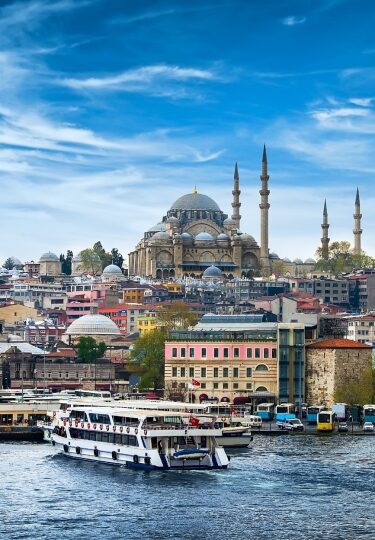Istanbul is one of the world’s great cities, the former capital of mighty empires. Its historic heart is the hilly, waterfront neighborhood of Sultanahmet, part of the Fatih District on the European side of the city.
The area is named for the Sultanahmet Mosque, better known as the Blue Mosque. Within this busy neighborhood are many of the city’s other sights, including the Hagia Sophia and the Basilica Cistern.
Having attracted visitors for centuries, Sultanahmet is also well supplied with everything from luxury hotels to restaurants and colorful markets. You’ll find the best in shopping, fascinating galleries, and some inspiring museums, however you choose to spend your day.
Attractions
Hagia Sophia
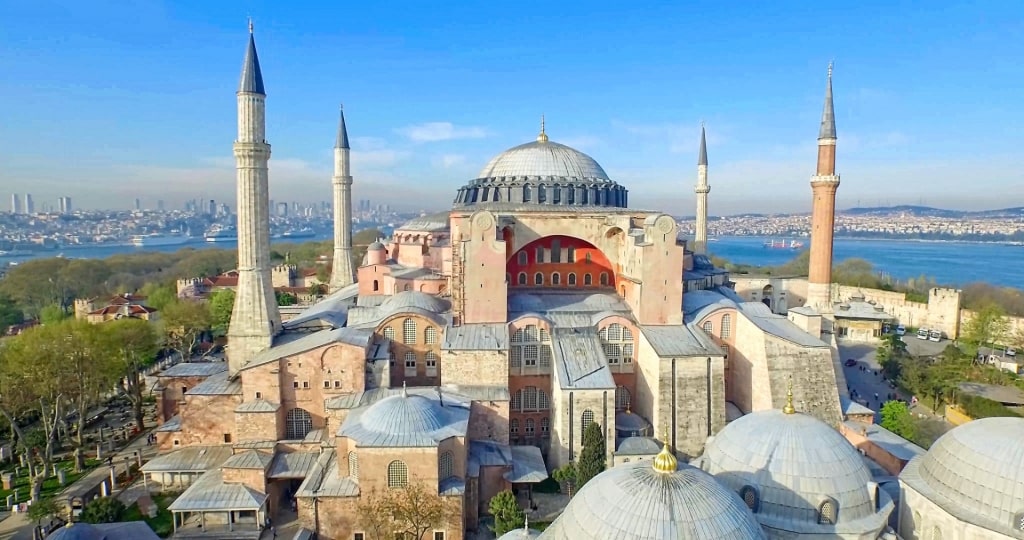
Hagia Sophia
Built as a Byzantine church around 537, the Hagia Sophia (“Holy Wisdom”) became a mosque after the Ottomans took Constantinople (Istanbul’s former name) in 1453. Its enormous dome was the largest in the world until the construction of Florence’s Duomo in the 15th century.
That groundbreaking architecture has inspired many other buildings, particularly mosques and churches. Orthodox Christian churches in particular owe much to its influence.
Turned into a museum in the 1930s, Hagia Sophia once again became a mosque in 2020. Any Muslim can enter it freely at prayer time, but other visitors may only access the second floor gallery.
This gallery (not wheelchair accessible) holds remarkable Christian mosaics that were plastered over for centuries. Explore with a guide (or download the free audio guide) to fully appreciate this awesome building.
Süleymaniye Mosque

Süleymaniye Mosque
The Süleymaniye Mosque stands on a hill overlooking Istanbul, Sultanahmet and the Bosphorus. It was built for Suleyman I (“the Magnificent”) by the most famous of Ottoman architects, Sinan.
Sinan was heavily influenced by the Hagia Sophia and his brief from the Sultan was to outdo that Christian wonder. Completed in 1557, the mosque also incorporates elements from the Italian Renaissance of the time.

Süleymaniye Mosque
The four minarets are said to represent Suleyman’s position as the fourth Sultan after the conquest of Istanbul. The ten balconies on them mark his place as the tenth sultan of the Ottoman Empire.
Inside the mosque, you’ll find the tombs of Suleyman the Magnificent, his wife Haseki Hürrem (“Roxelana”) and Sinan himself. Even more impressive are the thousands of tiles forming intricate patterns and the stained glass.
Blue Mosque
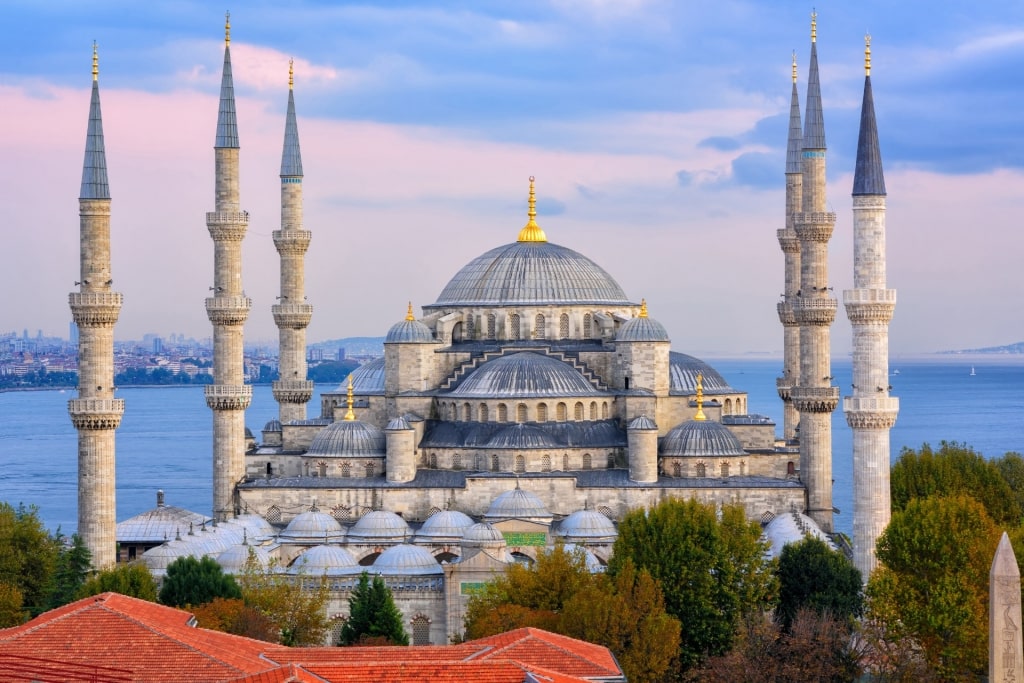
Blue Mosque
One of the best places to visit in Istanbul, the wonderful Sultanahmet Mosque was built in 1616 for Sultan Ahmet I. It’s known as “The Blue Mosque” for the predominant color of thousands of beautiful Iznik tiles inside and out.
The mosque’s architect was Sedefkar Mehmet Ağa, a student of the great Sinan. His detailed plans filled six volumes that can still be seen in the library of the Topkapi Palace.
The Sultan wanted a mosque that would surpass the grandeur of the Hagia Sophia. Its six minarets were unprecedented at the time, being seen only in the Great Mosque of Mecca.
The color blue symbolizes the heavens and the mosque’s vast, light-filled prayer hall similarly evokes calmness and spirituality. The tile patterns, ornate calligraphy, and elegant columns add beautiful detail to an overall sense of wonder.
Topkapi Palace
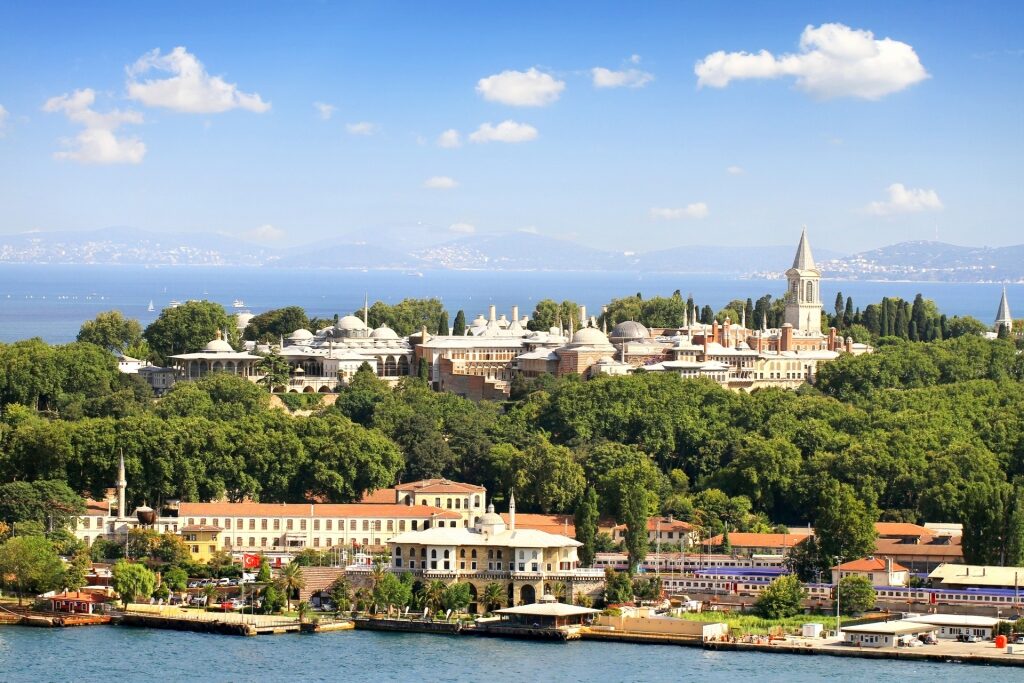
Topkapi Palace
Listed as a UNESCO World Heritage Site, the Topkapi Palace was a residence and administrative center for the Ottoman Sultans. It stands overlooking the Golden Horn, where the Bosphorus and the Sea of Marmara meet.
The palace dates to the 15th century and is made up of many buildings within a network of gardens and courtyards. You’ll need a guide to fully explore all its parts.
Of course, the Imperial Harem is one of the most intriguing parts of the palace. Richly decorated, it protected the Sultan’s family and concubines.
Another highlight is the Treasury, with its collection of glittering jewelry and other precious objects. The ornate thrones and the priceless Topkapi Dagger are the most outstanding.
Nuruosmaniye Mosque
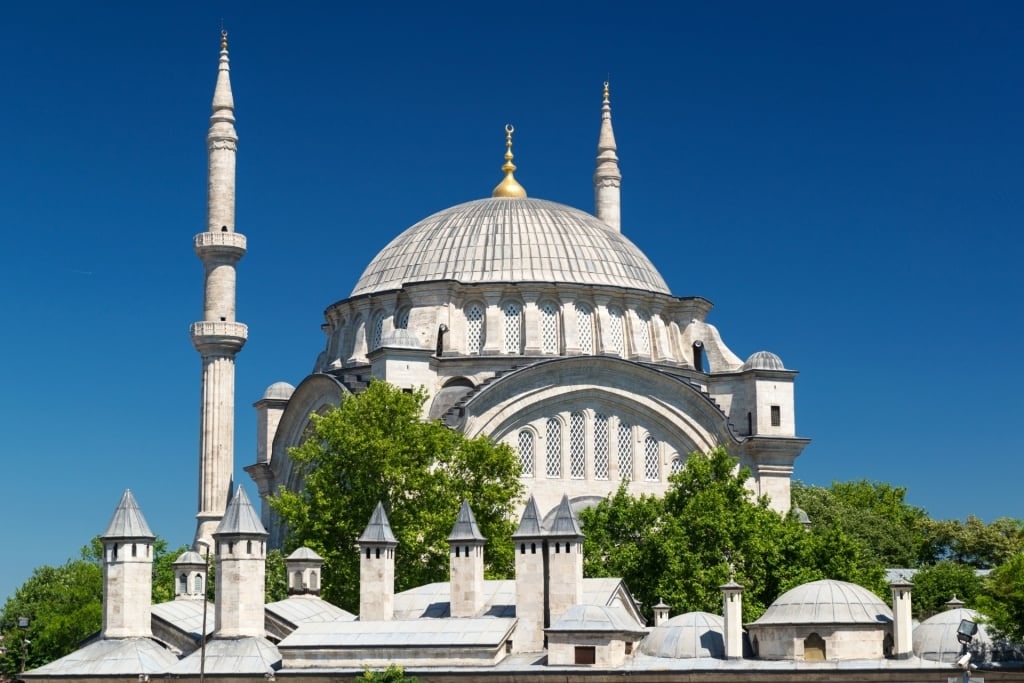
Nuruosmaniye Mosque
With the third largest dome in Istanbul, the Nuruosmaniye Mosque sits just outside the Grand Bazaar. Dating to 1755, the time of Sultan Osman III, it features baroque and neoclassical architectural elements.
The mosque was the first in the Ottoman Empire to use a non-Muslim architect. Simeon Kalfa was a Greek and his assistant, as well as a majority of the stonemasons, were Christians.
Nuruosmaniye means “Light of Osman” (meaning Osman III) and this is referenced by a Koranic inscription inside the dome. It translates as: “God is the Light of the Heavens and the Earth.”
A ramp outside allowed the sultan to ride to his private quarters in the mosque on horseback. The horseshoe-shaped courtyard—decorative, rather than the usual functional square—is another interesting feature.
Basilica Cistern
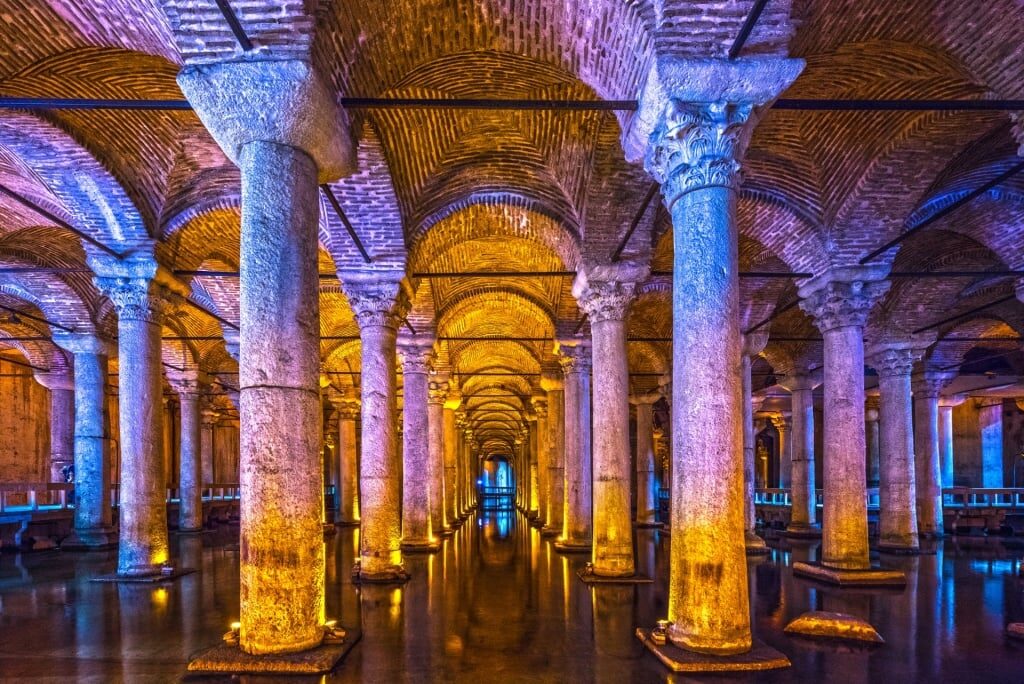
Basilica Cistern
Close to the Hagia Sophia, the Basilica Cistern dates back to the days of Constantinople in the sixth century. Its vast underground chamber was supplied with water via aqueducts from the Belgrade Forest, 12 miles away.
The cistern takes its English name from a basilica that formerly stood on the site. In Turkish, the reservoir is called Yerebatan Sarnıcı, or “Underground Palace”, a good description of the awe it inspires.
The roof of the cistern is supported by 12 rows of 30-foot-high columns. The 28 columns in each row vary in design, with many repurposed from other grand buildings.
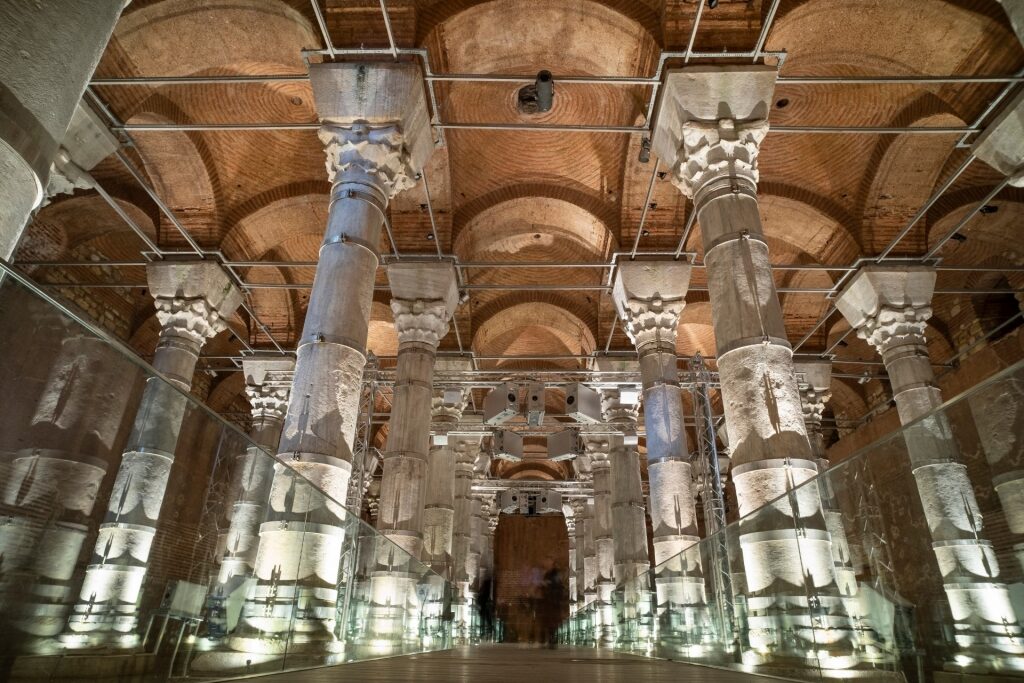
Basilica Cistern
For centuries, it supplied water to the Topkapi Palace. It’s only one of many cisterns—such as the nearby Cistern of Theodosius—that ensured the city could withstand long sieges.
Things to Do in Sultanahmet, Istanbul
Shop in the Grand Bazaar
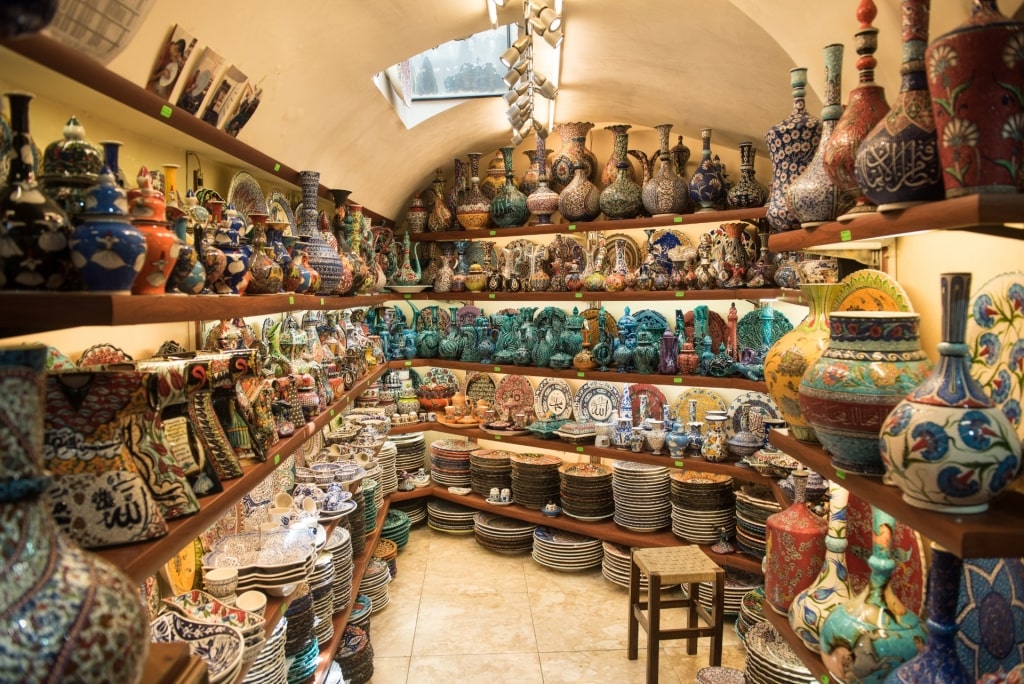
Grand Bazaar
With around 4,000 shops arranged along myriad passages, the Grand Bazaar in Sultanahmet, Istanbul is like a large village. It has been here since 1456, bringing together Europe and Asia to become the center of Mediterranean trade.
Those years as the commercial heart of the Ottoman Empire are long behind it. But this market in Istanbul still thrives as an essential stop for any first-time visitor to the city.
Shop here for kilim rugs, leather goods, colorful ceramics, Turkish tea, jewelry, fragrant soaps, and shisha pipes. Remember to haggle politely before buying anything; it’s expected.
Smell the Spice Market
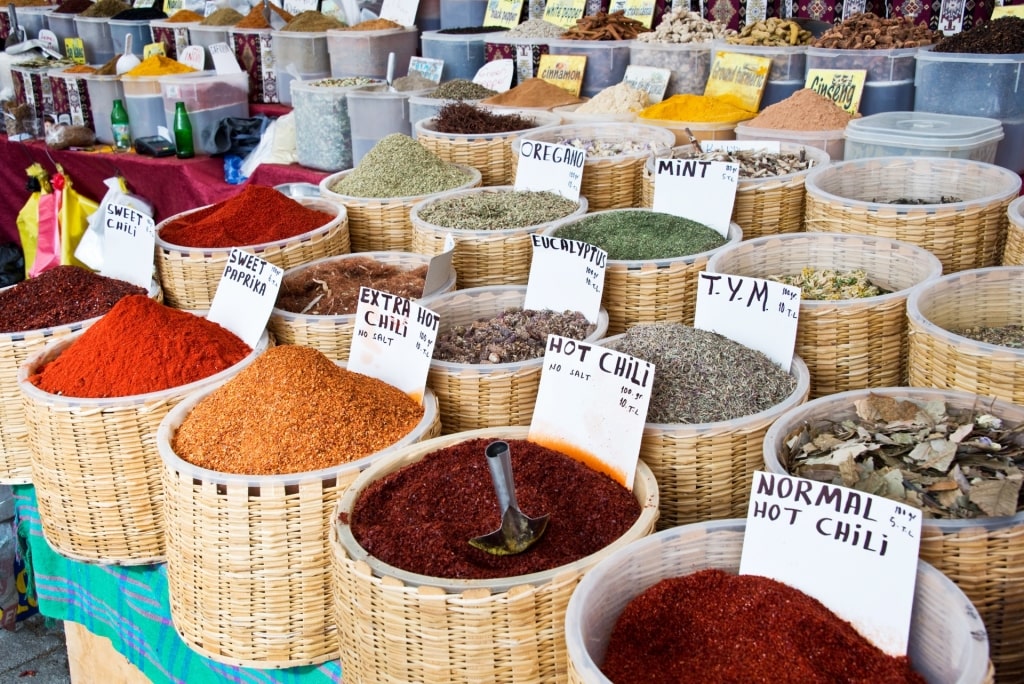
Spice Market
Officially the Egyptian Bazaar, the Spice Bazaar is called that for its many shops offering colorful spices. The air is also fragrant with dried fruits, nuts, teas and coffee, and nutty, rose-scented Turkish Delight.
Sadly, more profitable products aimed at overseas visitors are now starting to replace these traditional offerings. Do your bit to preserve this piece of history by ignoring these other souvenirs in favor of the more perishable produce. Shop for brilliant red paprika, sumac, Turkish saffron, decadently sweet baklava, and tea in every flavor imaginable.
Stroll in Gülhane Park

Gülhane Park
Next door to the Topkapi Palace, Gülhane is the oldest park in Istanbul. Once part of the palace gardens, it extends over 27 acres.
Walk down its tree-shaded avenues to enjoy wonderful views of the Bosphorus Strait and the Golden Horn. In March and April, the park is alive with color as host of the Istanbul Tulip Festival.
Hang Out in Sultanahmet Square
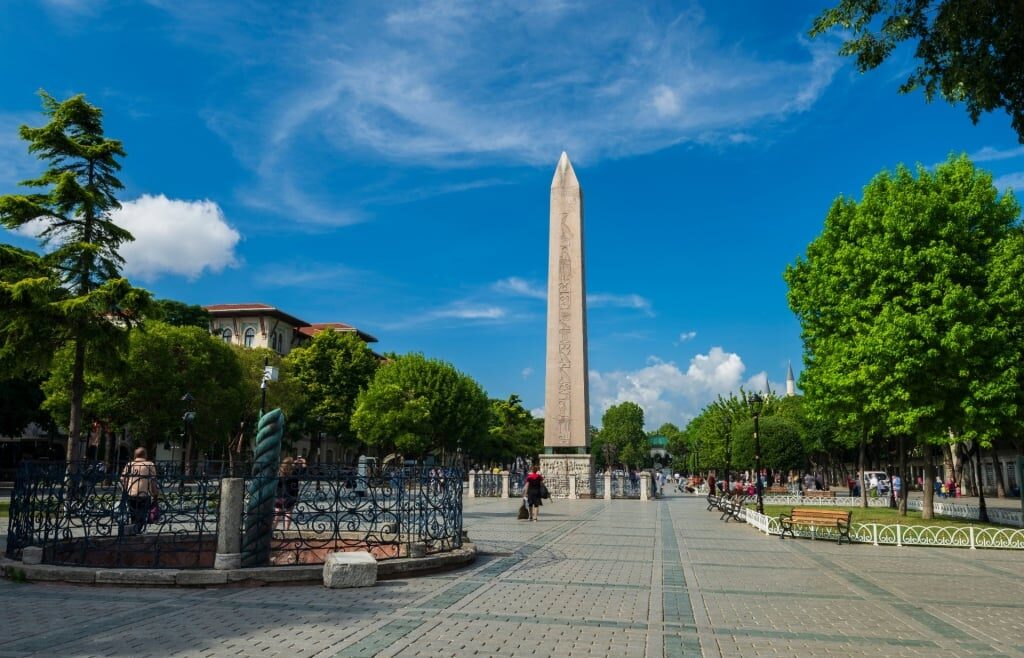
Sultanahmet Square
This massive public square stands among most of Istanbul’s most famous landmarks. These include the Hagia Sophia, the Blue Mosque, and the Basilica Cistern.
This large space was formerly the site of the third-century Hippodrome of Constantinople, used to host chariot races. Several monuments from that ancient wonder can still be seen, including the Egyptian Obelisk, the Serpent Column, and the Walled Obelisk.
Linger in the Turkish and Islamic Arts Museum
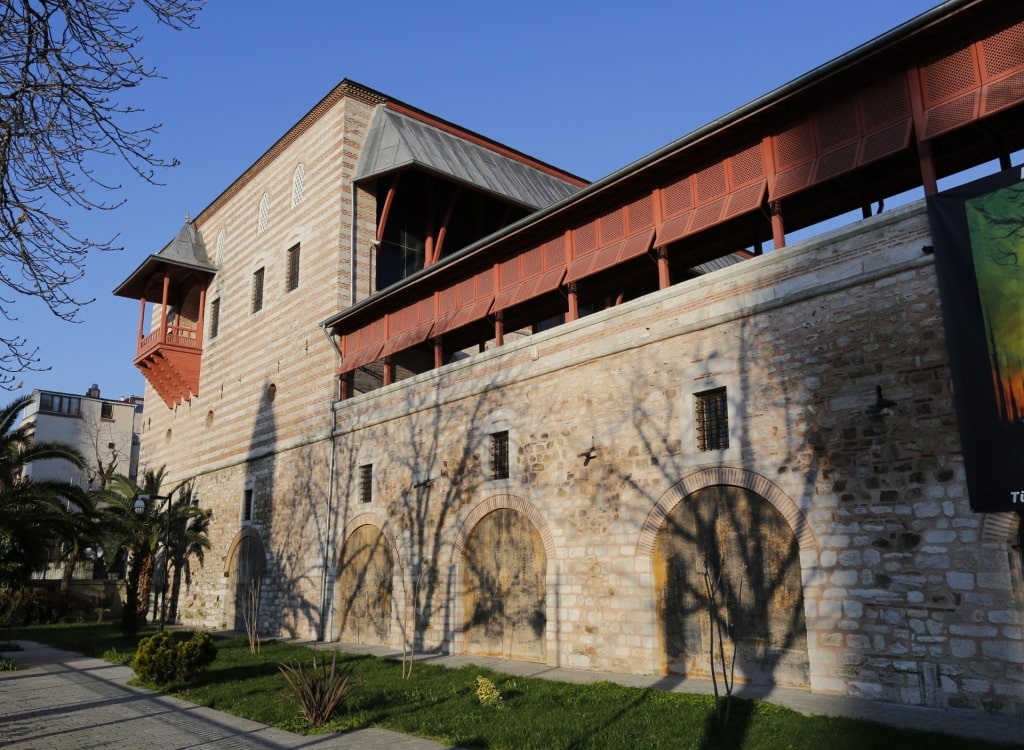
Turkish and Islamic Arts Museum
The Turkish and Islamic Arts Museum is in a 16th-century Ottoman palace. It’s a wonderful setting for glorious examples of Islamic calligraphy, mesmerizing Iznik tiles, and luxurious carpets.
Other works of hand-crafted skill include ceramics, jewelry, woodwork, and clothing. The Museum also hosts temporary exhibitions.
Cross the Galata Bridge
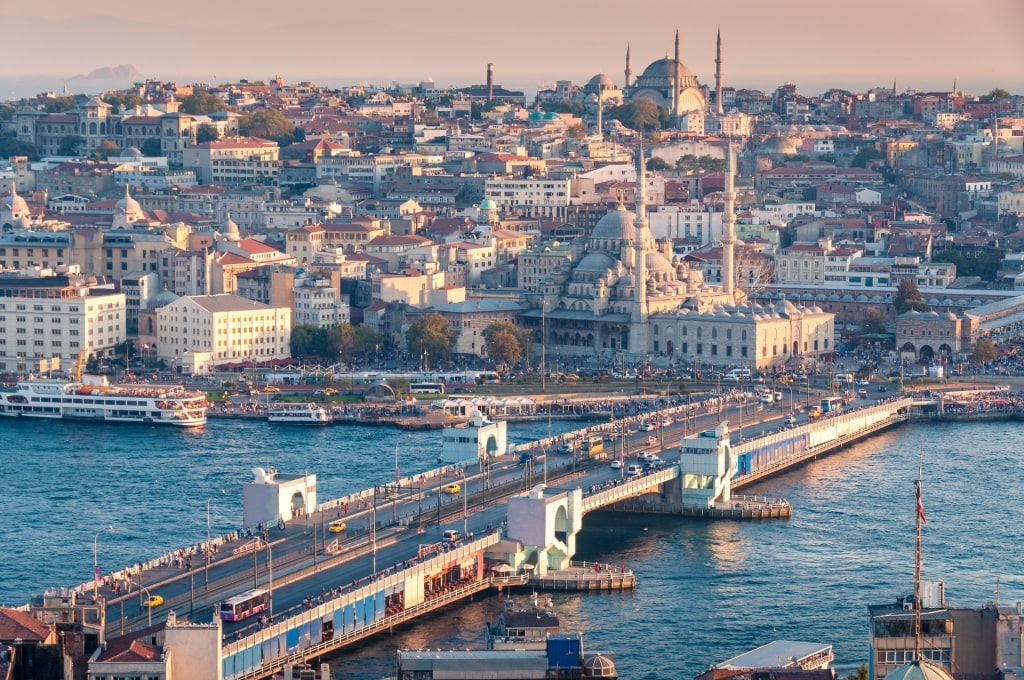
Galata Bridge
The Galata Bridge spans the Golden Horn, the natural estuary that divides Istanbul’s old quarter, which includes Sultanahmet and the newer urban sprawl of the city, stretching along the shores of the Bosphorus. On the opposite side of the Bosphorus is the Asian side, so you’re looking across at another continent.
The upper level of the bridge is pedestrianized and a popular place to take in the city view. It’s also busy with anglers, although it’s unlikely any of the seafood restaurants around the bridge depend on them.
Restaurants
The Istanbul neighborhood of Sultanahmet is over-supplied with restaurants, so competition is high. That inevitably leads to some mixed experiences, but you can also find some of the best in Turkish cuisine.
Matbah Restaurant
Specializing in Ottoman Cuisine, Matbah has been a highlight of the local dining scene for decades. It has now been recognized by Michelin for its quality and service.
As well as the food, the restaurant is also a good place to try Turkish wines. Varieties such as Çalkarası or Boğazkere should give you a pleasant surprise.
Şehzade Cağ Kebap

Cag kebab
You’re obviously not going to leave Istanbul without trying a kebab and this is the place to do it. Cag kebab is cooked horizontally, rather than vertically, over a charcoal wood fire for an intense flavor.
The meat used is exclusively lamb and Şehzade uses only the highest quality meat. Many visitors from North America are not familiar with lamb, but this may well give you the taste for it.
Hafiz Mustafa 1864
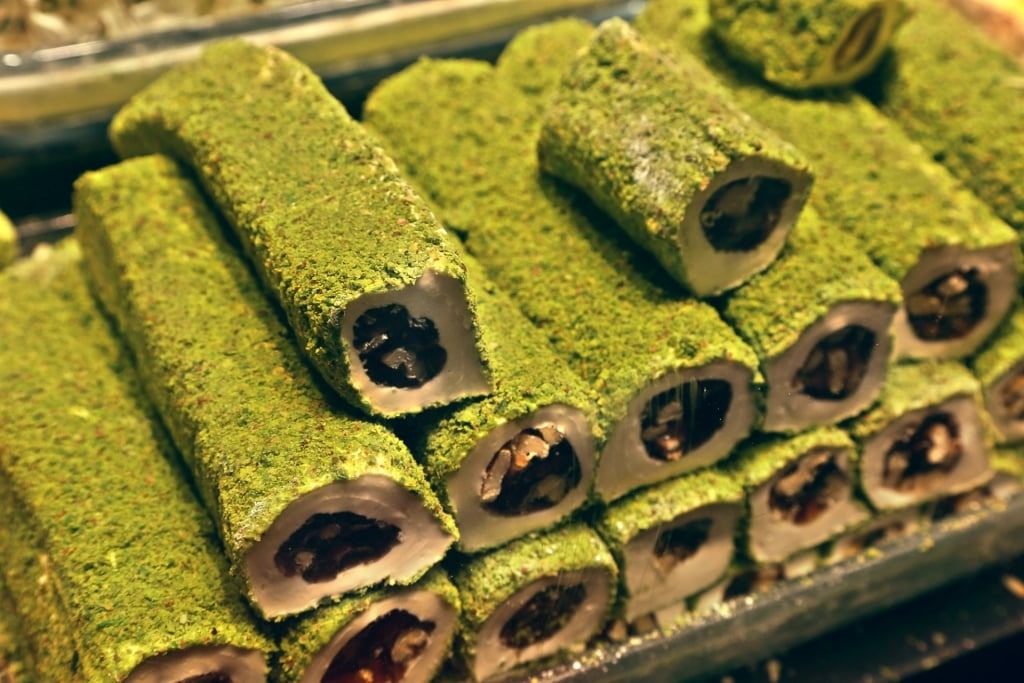
Turkish delight
Having been established in 1864 makes this one of the oldest cafés in Istanbul. The secret of its success might be that it serves only cakes and desserts.
Sit with a coffee, or buy some take-away delights to eat later. Sweet, nutty baklava is a given but the range of other treats will keep you coming back for more.
Deraliye
Another restaurant recognized by Michelin, Deraliye offers a fusion of Central Asian and Turkish cuisine. The beautiful interior is worth a visit in itself and the service is exquisite.
Dishes such as lamb stewed with damsons and goose kebab are rich in flavor. The restaurant (which is close to the Hagia Sophia) also runs short cooking classes every day.
Gulhane Sark Sofrasi
This is a great Sultanahmet restaurant if you love seafood… and cats. The resident cats are well behaved and will leave you alone if you prefer, or stay close if you pamper them.
Presentation is not very sophisticated, but hearty dishes and friendly service make up for any gap. As well as fish, you can find kebabs and vegetarian options.
Turkish mezze is an array of delicious spicy dips and salads that often precedes a main course and is a great option for vegetarians.
Read: What to Eat in Istanbul
Travel Tips
Best Time to Visit
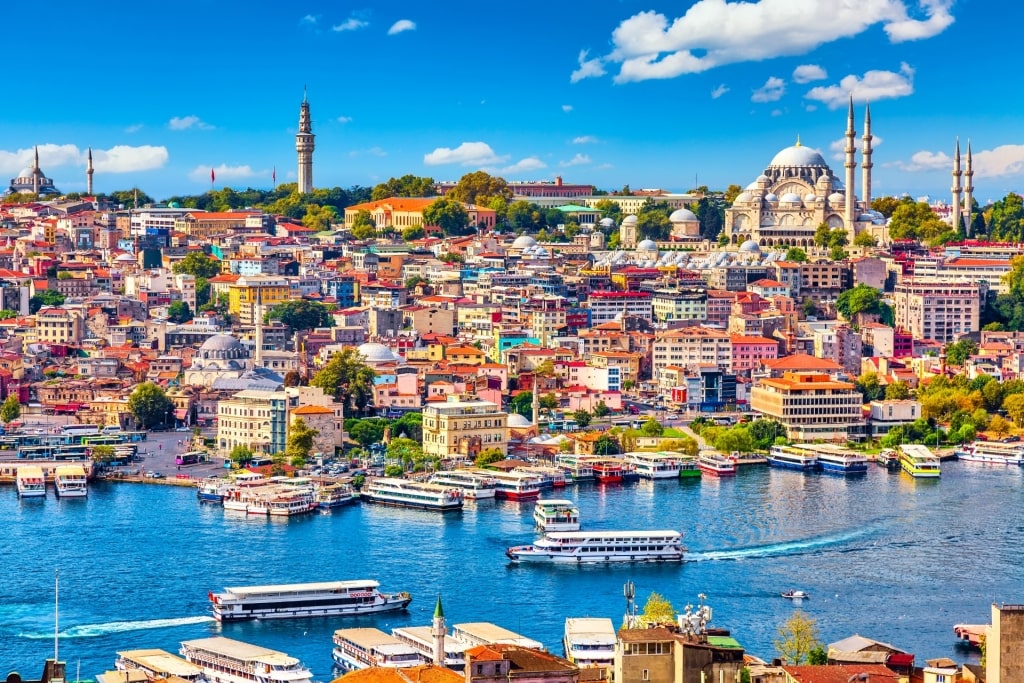
Sultanahmet
Spring (April to May) and fall (September to November) are the best times to visit Istanbul. Summers are also popular, if hot, while winter can bring rain and much colder temperatures.
However, like any big city, it’s easy to insulate yourself from the weather in Sultanahmet’s museums, shops, or other indoor spaces. Istanbul’s Grand Bazaar, many massive mosques, and other impressive sights are even better in the off-season with fewer visitors.
Ramadan, the Islamic holy month of fasting is a fascinating time to visit. However, as Muslims fast from dawn until sunset, some businesses will shorten their hours.
What to Pack
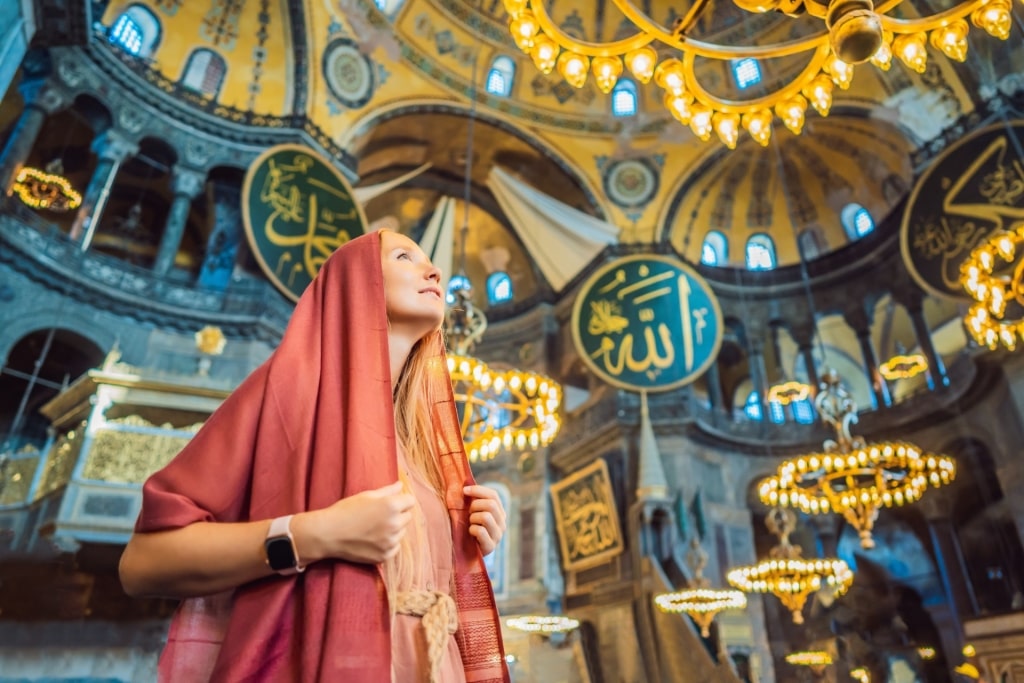
Hagia Sophia
When visiting a mosque, it is expected you will be respectful in your clothing. Covering arms, legs, and (for women) your head is required.
Mosques, with their vast internal pieces, can be chilly, another reason to have some extra clothing layers on your visit. You will also have to remove your shoes, so a shoe bag will save time reclaiming them at the entrance.
Currency & Tipping
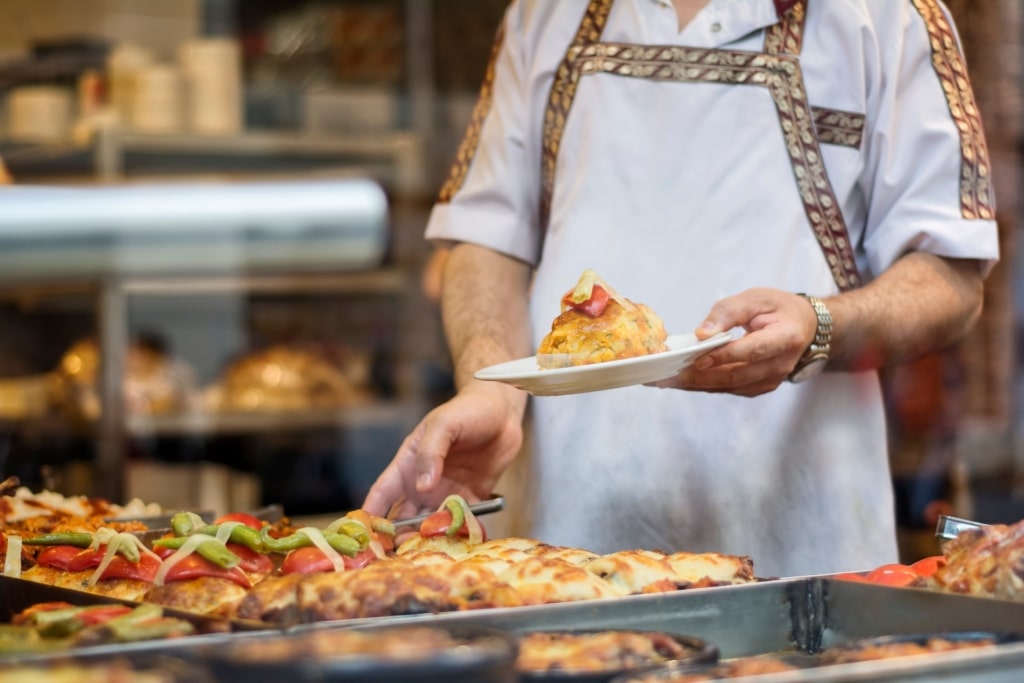
Restaurant in Istanbul
The currency in Istanbul is the Turkish lira, which you can easily withdraw from the many ATMs. The best option is a debit card, while using an ATM at a bank (as opposed to a stand-alone machine) will help you in case of any problems.
Major shopping centers, hotels, and restaurants will also accept U.S. Dollars or Euros. Be careful to double-check the always-fluid exchange rate you are offered and count your change carefully as it will always be in local currency.
Credit cards are widely used, but American Express is regularly refused because of high commissions. There is no real tipping culture in Turkey (hamams/spas are a notable exception) but rounding up a restaurant bill is the norm.
However, in tourist areas such as Sultanahmet, tipping has become expected. Tip five to 10 percent in restaurants, or for tour guides if the service justifies it.
What to Buy
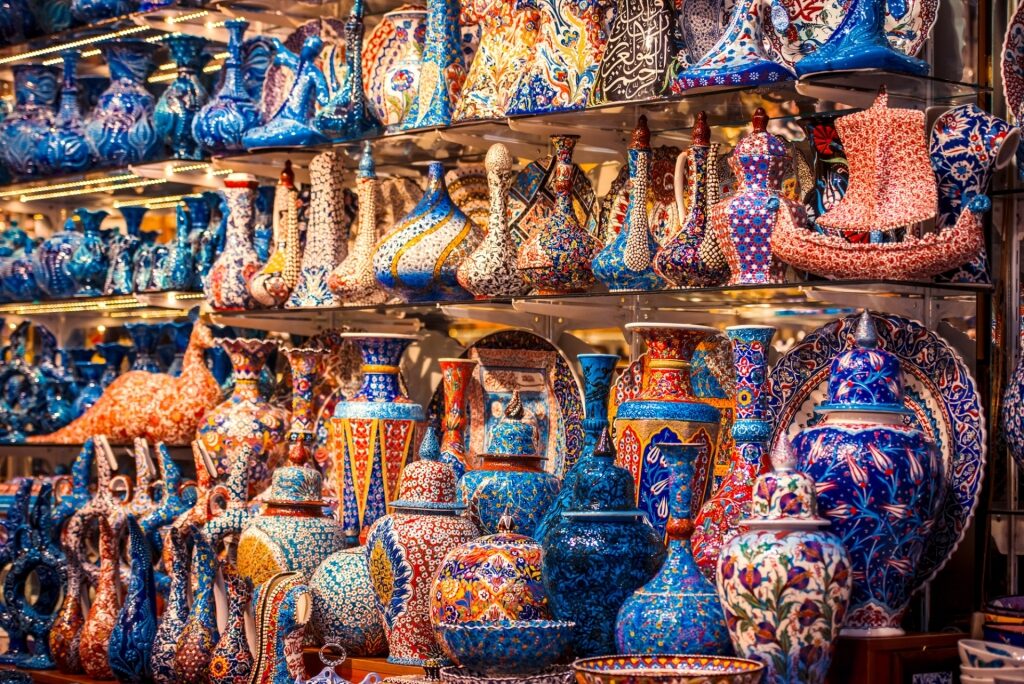
Turkish ceramics
The handicrafts for which Turkey is famous are the best choices for shopping in Istanbul. Carpets and rugs, especially those made from silk, are often amazing works of art.
Ceramics such as decorative plates or colorful Iznik tiles are often masterpieces. With motifs inspired by Ottoman and Islamic art, they will always remind you of your visit.
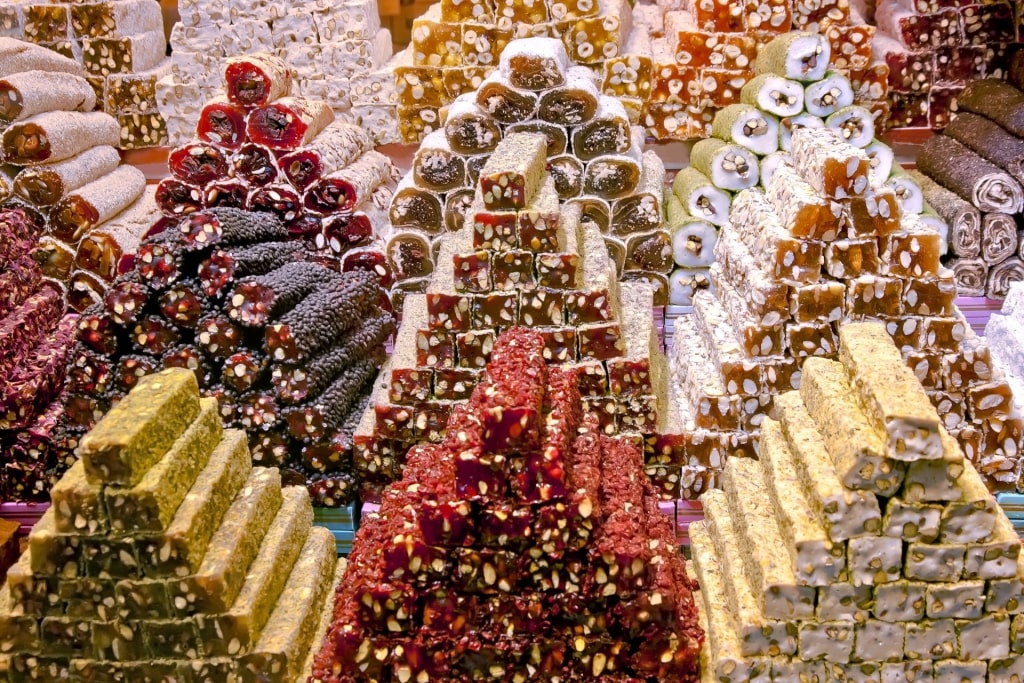
Turkish delight
Handmade jewelry in silver, gold, or precious stones can be found in the artisan neighborhoods around the Grand Bazaar. Turkish Delight (Lokum), spices, and hamam bath products will all delight the senses in different ways.
If buying antiques or vintage items, be sure to have a certificate of origin to avoid laws on exporting antiquities. Finally, traditional clothing such as kaftans or a handwoven scarf or shawl make for unique Turkish souvenirs.
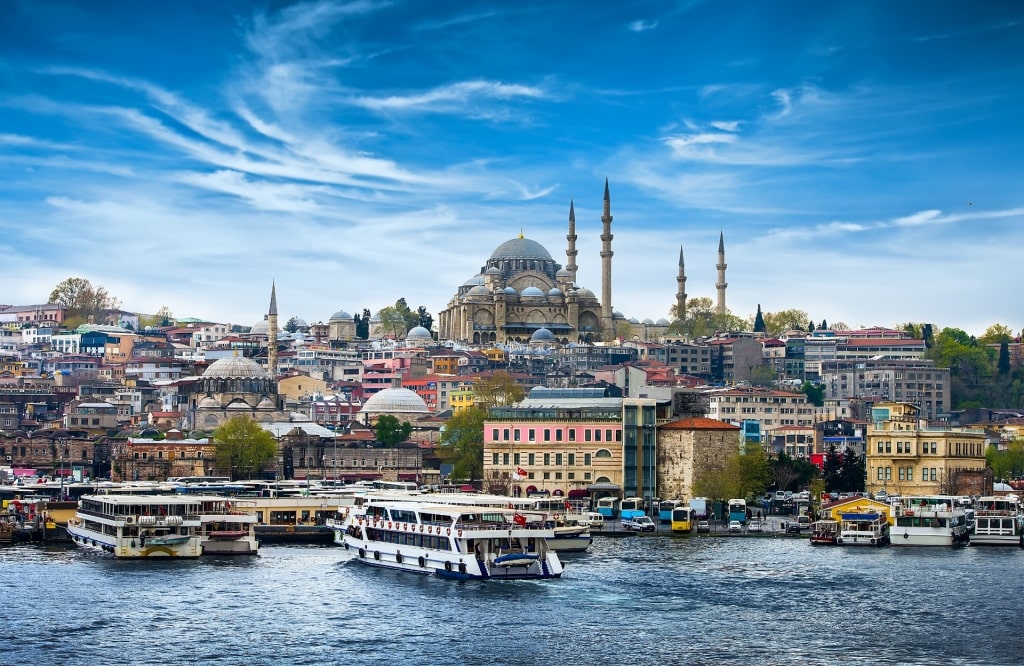
Sultanahmet
Has this Insider’s Guide to Sultanahmet, Istanbul inspired you to visit Turkey? Then browse our Istanbul cruises to book the perfect vacation.
